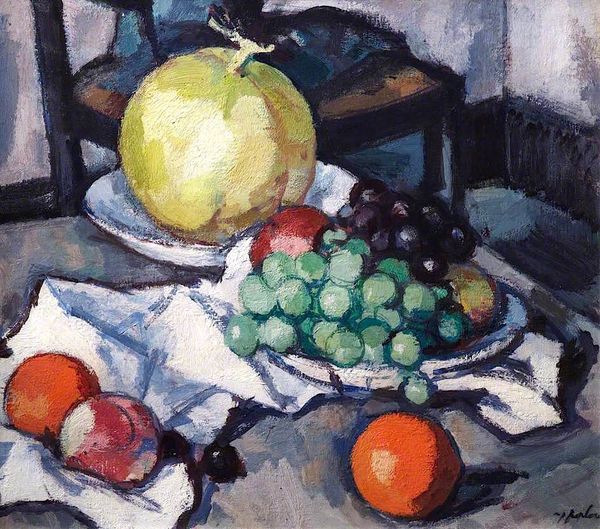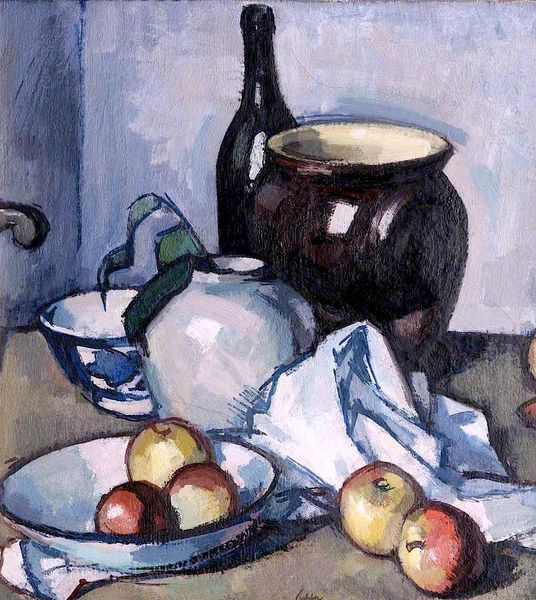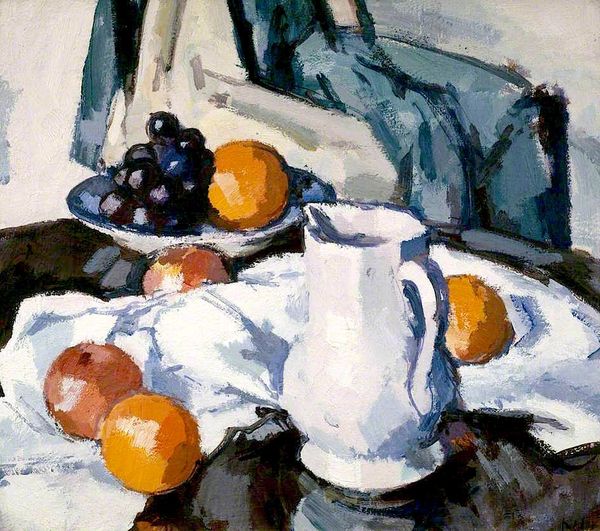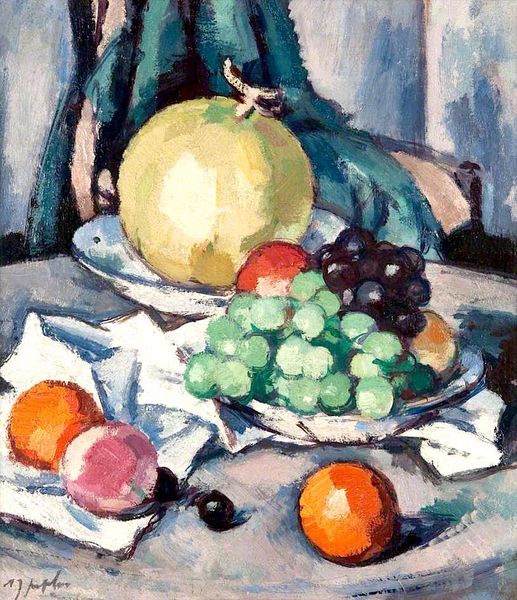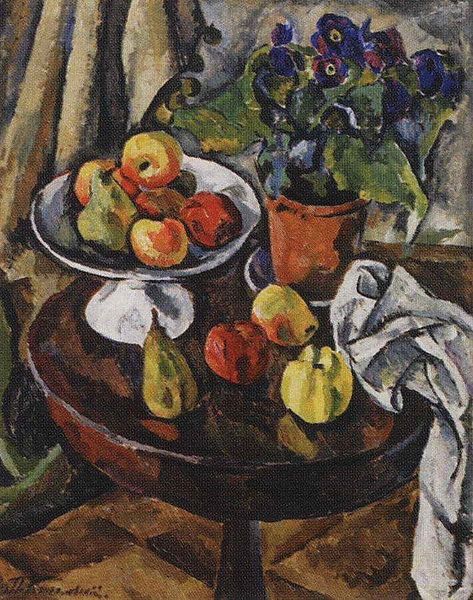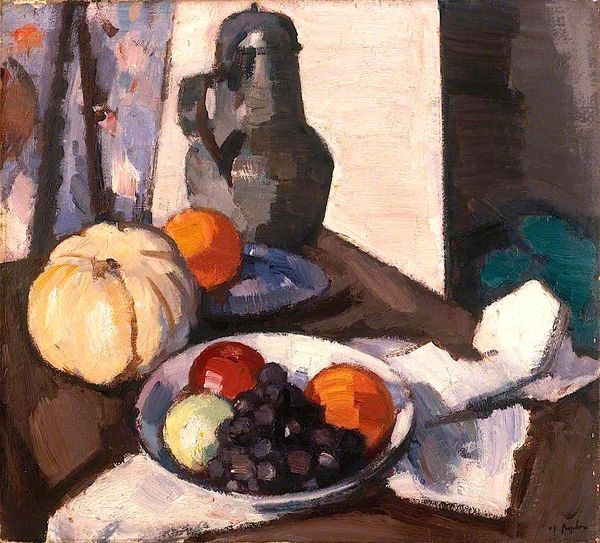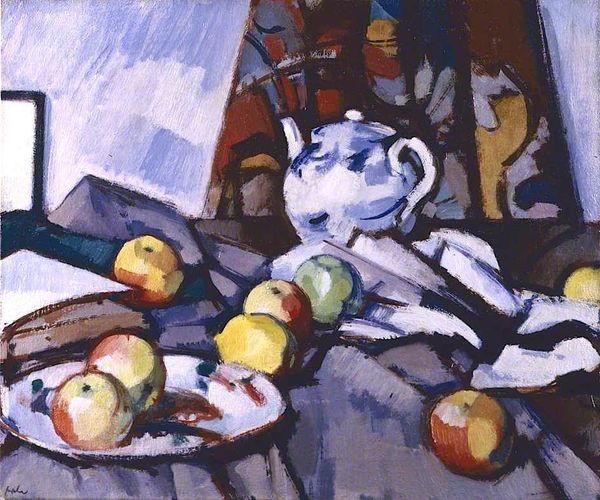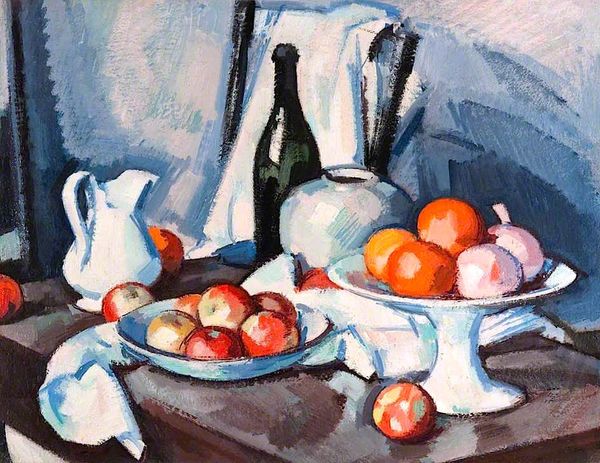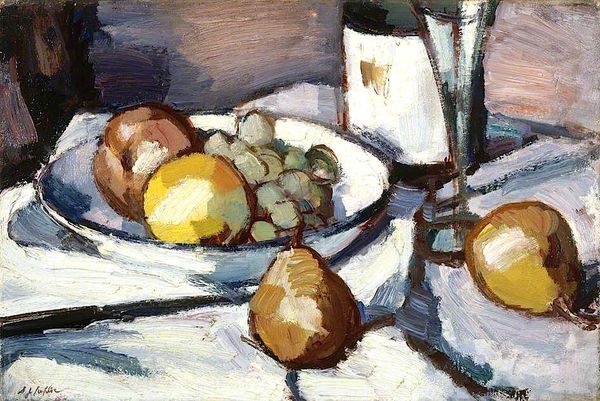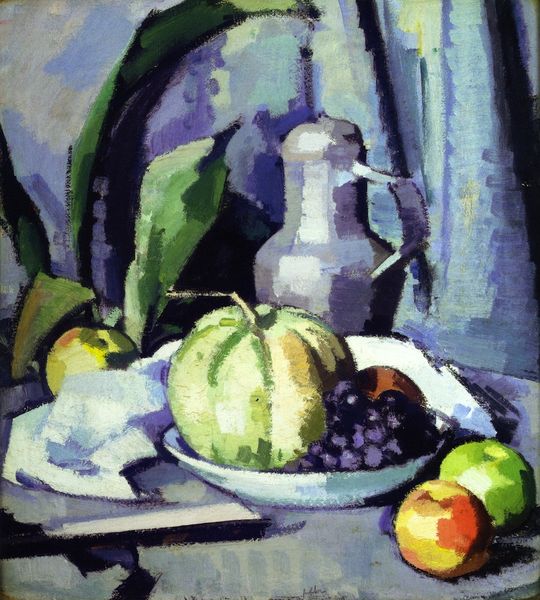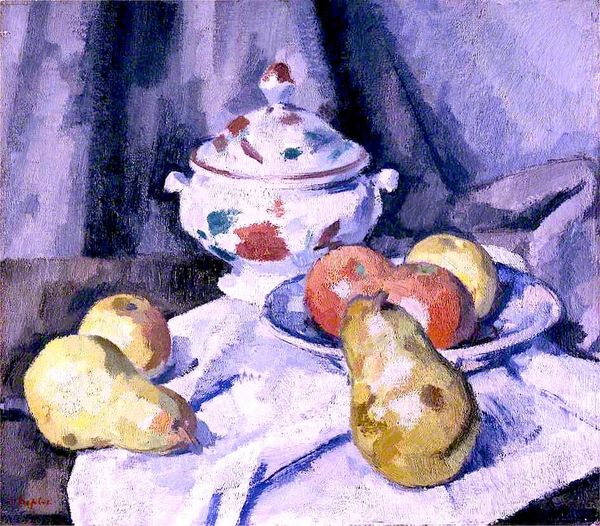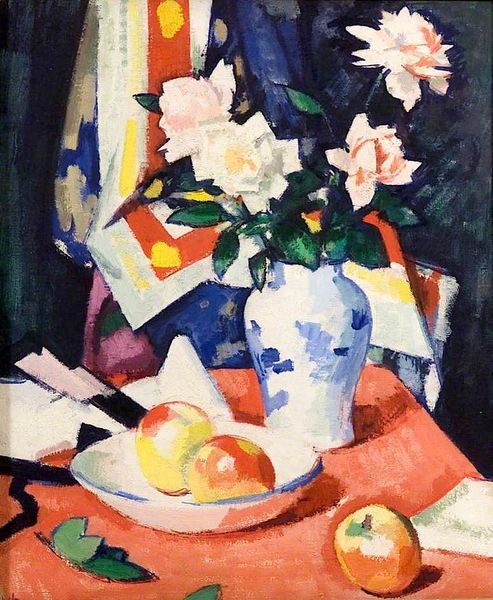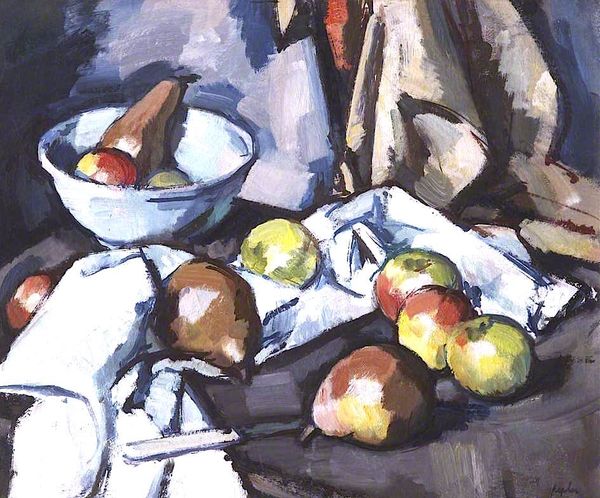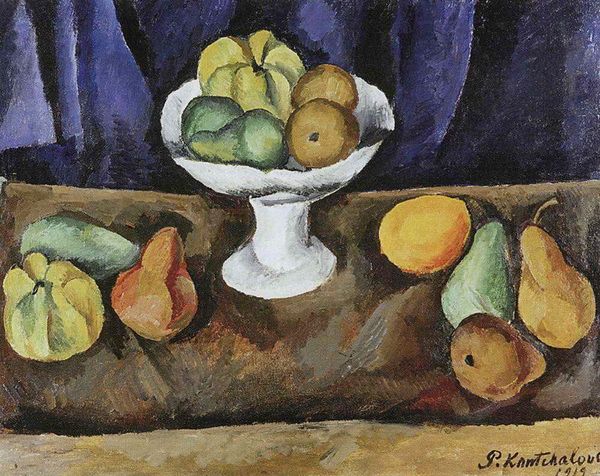
Copyright: Public domain
Editor: Here we have Samuel Peploe’s "Still Life with Melon," painted in 1920 using oil paints. There’s something wonderfully tactile about this piece. The impasto is very luscious. What compositional elements strike you as most significant? Curator: Note the juxtaposition of colors, the way Peploe employs a restricted palette to create a sense of visual harmony. The cool blues and greens of the background interact dynamically with the warmer oranges and yellows of the fruit. Consider the solidity of the forms, rendered with an almost geometric abstraction. How do you perceive the artist's treatment of space? Editor: I see it as somewhat flattened, with a limited sense of depth. It almost feels as if the objects are pressed against the picture plane. I'd describe his style as being simplified, almost as a rudimentary rendering, in which all is still coherent. Curator: Precisely. Peploe prioritizes formal relationships over mimetic representation. His choice of simple shapes and bold colors draws attention to the constructed nature of the image itself. Observe how each brushstroke contributes to the overall texture and pattern of the composition. Are you mindful of any relationship with Cubism? Editor: Now that you mention Cubism, I realize that "Still Life with Melon" is similarly oriented around simplification and a high degree of abstraction. Curator: And consider, as well, the influence of Cézanne on Peploe’s construction of form through color and geometric rendering of space. Through our shared investigation, hopefully we’ve shown our audience a way to see and interpret this deceptively simple painting in greater depth. Editor: Definitely. It has been insightful to focus on the color relationships and the overall composition.
Comments
No comments
Be the first to comment and join the conversation on the ultimate creative platform.
